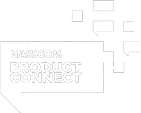Combination Learning is a new technique of teaching and learning. Developed by TeachThought, this method advocates learning through a flexible combination of two or more learning components. Modern learning environments provide endless opportunities and possibilities. This learning strategy caters to that as it is flexible and adaptable to various grade levels, content areas, availability of resources, and infrastructure.
In Combination Learning, students and teachers work together to design and develop personalised learning experiences. In this student-centric approach to teaching and learning, teachers act as facilitators and mentors, and students are responsible for their learning, progress, and performance.
The primary concept of Combination Learning is to move the focus away from the material and toward the learning process.
Combination Learning allows teachers and students to collaborate to create unique and personalised learning experiences by combining bits and pieces of knowledge. The outcome is a flexible, self-directed learning environment where the instructor serves as a facilitator and mentor. The student is at the centre of their progress and performance and is solely responsible for it.
It can be as basic or as complicated as the situation requires. It can be based on standards or be open-ended; it can be technology-based or based on in-person human connection; it can be project-based, game-based, rigorous, supporting, and so on. As a result, it is more of a shell or template that teachers and students can fill in as needed.
Some researchers and educational think tanks have proposed distinct Blended Learning models. Among these models are:
- Face-to-Face Driver: Here, the teacher drives the instruction while supplementing with digital tools.
- Rotation: Students rotate through a schedule that alternates between independent online study and face-to-face classroom time.
- Flexibility: Most of the curriculum is delivered digitally and teachers are available for face-to-face consultation and support.
- Labs: All curriculum is delivered digitally but in a consistent physical location. In this model, students typically take traditional classes as well.
- Self-Blending: This entails students supplementing their traditional learning with online coursework.
- Online Driver: Students complete an entire course online with possible teacher check-ins. All curriculum and instruction are delivered digitally and face-to-face meetings are scheduled or made available as needed.
According to reports, blended instruction is more effective than purely face-to-face or purely online classes. Blended Learning methods can also produce higher levels of student achievement than face-to-face learning.
Students can work on their own with new concepts using a combination of digital instruction and one-on-one face time, freeing teachers to circulate and support individual students who may require individualised attention. Communication between lecturers and part-time students improves as a result of incorporating information technology into class projects. Students better evaluate their understanding of course material through computer-based qualitative and quantitative assessment modules.
Blended Learning has the potential to lower educational costs. It can reduce costs by bringing classrooms online and it essentially replaces expensive textbooks with electronic devices that students frequently bring to class. E-textbooks, which can be accessed digitally, may also aid in reducing textbook costs.
Blended Learning frequently includes software that automatically collects student data and measures academic progress, providing detailed student data to teachers, students, and parents. Tests are frequently automatically scored, providing instant feedback. To ensure accountability, student logins and work times are also tracked.
Students who have special talents or interests that are not covered by the available curriculum use educational technology to advance their skills or to exceed grade restrictions. Blended Learning allows for personalised education as opposed to the traditional model where a teacher stands in front of the classroom and everyone is expected to keep up at the same pace. Blended Learning allows students to work at their own pace, fully comprehending new concepts before progressing.
The benefits of Blended Learning are determined by the quality of the programmes that are implemented. Facilitating student learning, effectively communicating ideas, demonstrating an interest in learning, organising, respecting students, and assessing progress fairly are some indicators of excellent Blended Learning programmes.
Embibe Product/Features: Personalised Achievement Journey, Next Question Engine, Search-Based Exploration
Embibe is a platform that uses Artificial Intelligence to provide students with personalised education. It recognises individual students’ needs, pinpoints their weaknesses, and identifies and addresses behavioural and test-taking gaps. It also assists teachers in providing timely guidance to students for improved learning outcomes.
Students can use ‘Search’ to gain access to study materials, practice, mock exams, and perform better in competitive exams. Embibe works holistically to create content, develop algorithms, improve delivery systems, and consistently assist students by providing a rich knowledge repository and personalised guidance that aids them in their careers.
Learn: Embibe’s ‘Learn’ consists of the world’s best 3D immersive content, making learning simple by visualising extremely difficult concepts. The learning experience is built on a strong foundation of the industry’s largest Knowledge Graph of 74,000+ concepts and 2,03,000+ competencies. It ensures deep personalisation across grades, exams, and goals. Moreover, students can view the videos at their own pace and even rewatch them if needed, unlike a traditional lecture, where information is only provided once.
Practice: Embibe’s ‘Practice’ feature consists of10 Lakh+ interactive question units packaged into chapters and topics of top-ranked 1,400+ books. An adaptive practice framework further strengthens ‘Practice’ by personalising practice paths for each student through deep knowledge tracing algorithms.
Test: Embibe’s AI identifies and categorises the topics covered in a test into ‘Chapters You Got Right’, ‘Chapters You Got Wrong’, and ‘Chapters You Did Not Attempt’. Students can also check their ‘Sincerity Score’ and understand the conceptual, behavioural, and time management issues they need to work upon and improve.

























